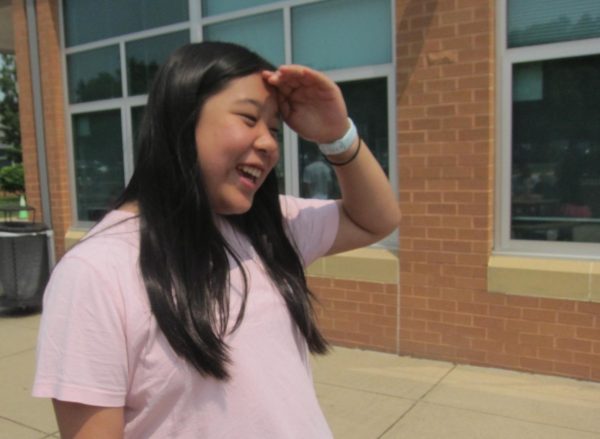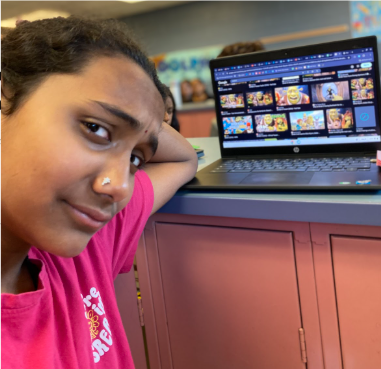Dress code changes are new to students after virtual year
Maisie Smith-Zoh, seventh-grader on the All-Stars Team, wears a coat according to the windy weather. Her clothes also follow dress code.
While students were home on virtual learning, Virginia State law was passed that banned bias in school dress codes, but some RCMS students aren’t convinced that goal has been fully achieved yet.“They’re a little more strict with girls then they are with boys,” says Haylei Martin, a seventh-grader on the Champions Team.
This new law states that the Board of Education sets “standards for reducing bias and harassment in the enforcement of any code of student conduct.” This sentence shows that one of the goals of the bill was to mitigate bias in the school building. The bill was passed in the house in 2020, however, the dress code has always been included in the FCPS Student Rights and Responsibilities (SR&R) handbook.
Since virtual and hybrid schooling was introduced in 2020-2021, students are only now thinking about dress codes after being back in school since the law was passed. Another big switch for seventh-graders is the new school and its rules and environment.
A student, who prefers to remain anonymous, makes a connection between middle and elementary school dress codes.
When asked if there were any changes made from elementary to middle school, she said, “Yes, definitely because we are older now and more mature, so we may wear clothes that might be wrong to the school.”
Although the bill stated that the dress code will reduce bias, Sophie Fang, eighth-grader on the Dolphins Team, feels like this is not happening. Sophie says, “I personally feel that the dress code is very biased and unfair at times.”
Haylei says that she believes the dress code is being enforced unequally. “I feel it’s like that because girls have a profile to keep up like you don’t wear too short of a skirt or you don’t show your shoulders, and when a boy does that it’s not a problem.”
The SR&R handbook states that students following the dress code “will contribute to a positive and rewarding school experience,” while also respecting “students’ right to express themselves in the way they dress.”
Ms. Sybil Terry, RCMS Assistant Principal, says, “Students are expected to dress appropriately for school. The county has all the appropriate options in SR&R.”
The bill states that schools are allowed to “restrict the attire, appearance, or grooming…of any enrolled student.” These restrictions have made an impact on many students who are experiencing dress code violations.
When asked about their dress-coding experience, an anonymous student says, “I felt embarrassed because I didn’t mean to get dress code and I felt bad for wearing that kind of clothing at school.”
This student feels that changing the way we dress is “a part of life.” She said, “It’s really just us aging and our clothes mature with us.”







